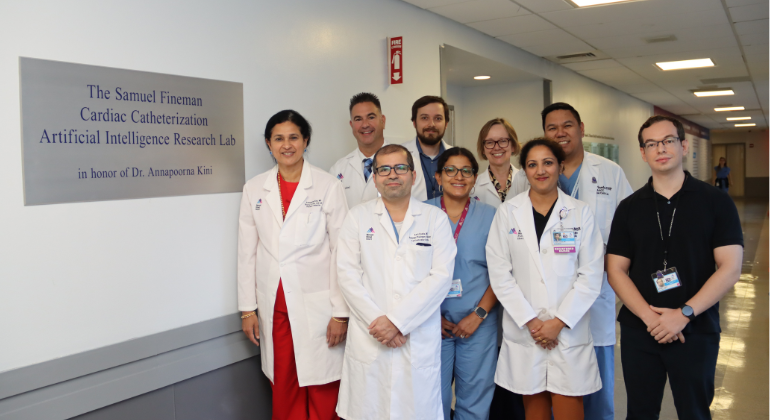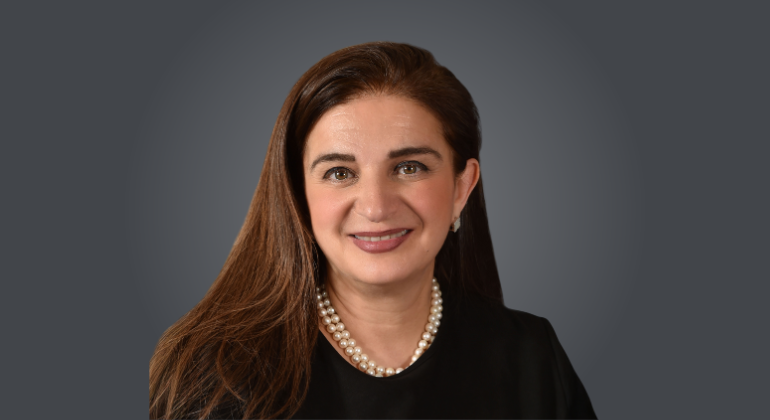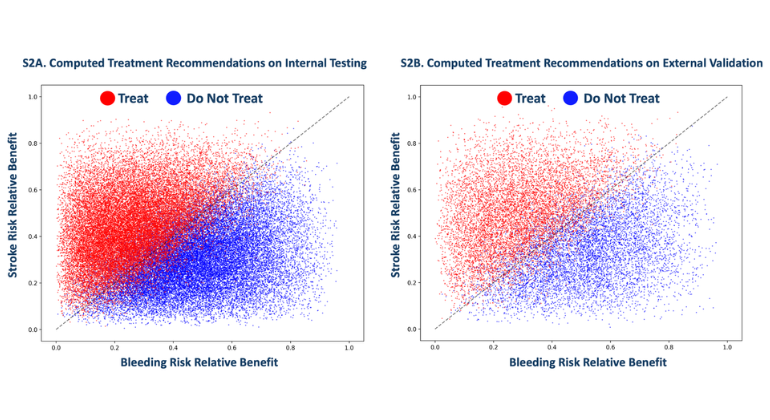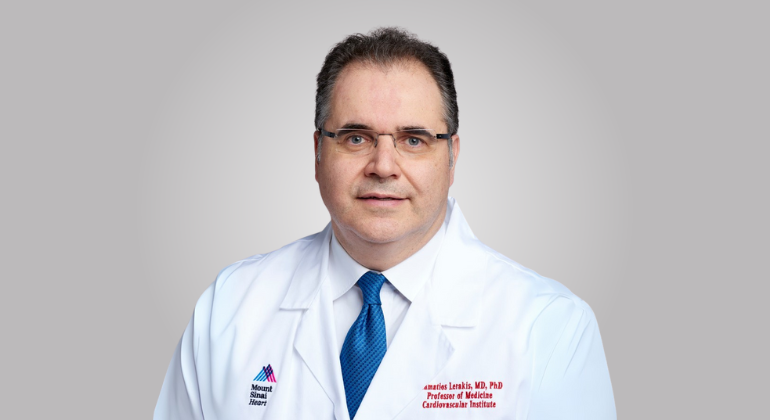Mount Sinai Researchers Find The Significance of Plaque Burden Using 3D Vascular Ultrasound in Estimating Cardiovascular Risk
Inexpensive and Radiation-Free Technology Has Potential to Become a Key Screening tool for Identifying at Risk Individuals
In a large population study that was the first of its kind, researchers found that an experimental technique known as three-dimensional vascular ultrasound (3DVUS) estimated the quantification of plaque burden (in cubic millimeters) as an important addition to conventional risk factor profile in addressing patient risk stratification.
At an average age of 45 years, they found that the plaque burden in subjects was more than twice as high in men as in women (63.4 cubic millimeters vs. 25.7), and higher in the femoral arteries, and with increasing age.
The study will be published online July 10, 2017, in The Journal of the American College of Cardiology.
Researchers explored the bilateral carotid and femoral arteries of 3,860 middle aged participants without prior cardiovascular disease who were employees of the Banco de Santander in Madrid, Spain. This is an ongoing observational prospective cohort study where participants are being followed up for 10 years. The 3DVUS examinations were performed using a new Phillips iU22 ultrasound system equipped with a VL13-5 3D volume–linear array transducer. This equipment will be available in the near future for routine patient care.
The clinical application of 3DVUS techniques is still at the research and development stage, but there are now a number of clinically promising areas including the measurement of plaque. Direct quantification of atherosclerotic plaque volume by 3DVUS is more reproducible than two-dimensional techniques.
“3DVUS is a feasible, reproducible, and novel imaging technique for quantifying early carotid and femoral atherosclerotic burden in large populations,” said the study’s lead author, Valentin Fuster, MD, PhD, Director of Mount Sinai Heart and Physician-in-Chief of The Mount Sinai Hospital. “This novel method is valid for imaging superficial peripheral atherosclerosis burden from early to advanced stages of disease and can be applied to identification of individuals at risk, targeting or monitoring treatment. Further studies are needed, however, to assess the cost utility of this method compared with others when used in large-scale practice settings and population-based epidemiological studies.”
The study is part of an international initiative that is being conducted through partnerships with the National Center for Cardiovascular Research in Spain, the Icahn School of Medicine at Mount Sinai, and the Framingham Heart Study.
About the Mount Sinai Health System
Mount Sinai Health System is one of the largest academic medical systems in the New York metro area, with 48,000 employees working across seven hospitals, more than 400 outpatient practices, more than 600 research and clinical labs, a school of nursing, and a leading school of medicine and graduate education. Mount Sinai advances health for all people, everywhere, by taking on the most complex health care challenges of our time—discovering and applying new scientific learning and knowledge; developing safer, more effective treatments; educating the next generation of medical leaders and innovators; and supporting local communities by delivering high-quality care to all who need it.
Through the integration of its hospitals, labs, and schools, Mount Sinai offers comprehensive health care solutions from birth through geriatrics, leveraging innovative approaches such as artificial intelligence and informatics while keeping patients’ medical and emotional needs at the center of all treatment. The Health System includes approximately 9,000 primary and specialty care physicians and 10 free-standing joint-venture centers throughout the five boroughs of New York City, Westchester, Long Island, and Florida. Hospitals within the System are consistently ranked by Newsweek’s® “The World’s Best Smart Hospitals, Best in State Hospitals, World Best Hospitals and Best Specialty Hospitals” and by U.S. News & World Report's® “Best Hospitals” and “Best Children’s Hospitals.” The Mount Sinai Hospital is on the U.S. News & World Report® “Best Hospitals” Honor Roll for 2025-2026.
For more information, visit https://www.mountsinai.org or find Mount Sinai on Facebook, Instagram, LinkedIn, X, and YouTube.

A Specific Human Gene Can Help the Heart Repair Itself From Heart Attack or Heart Failure
Nov 03, 2025 View All Press Releases
Mount Sinai Launches Cardiac Catheterization Artificial Intelligence Research Lab
Sep 15, 2025 View All Press Releases







